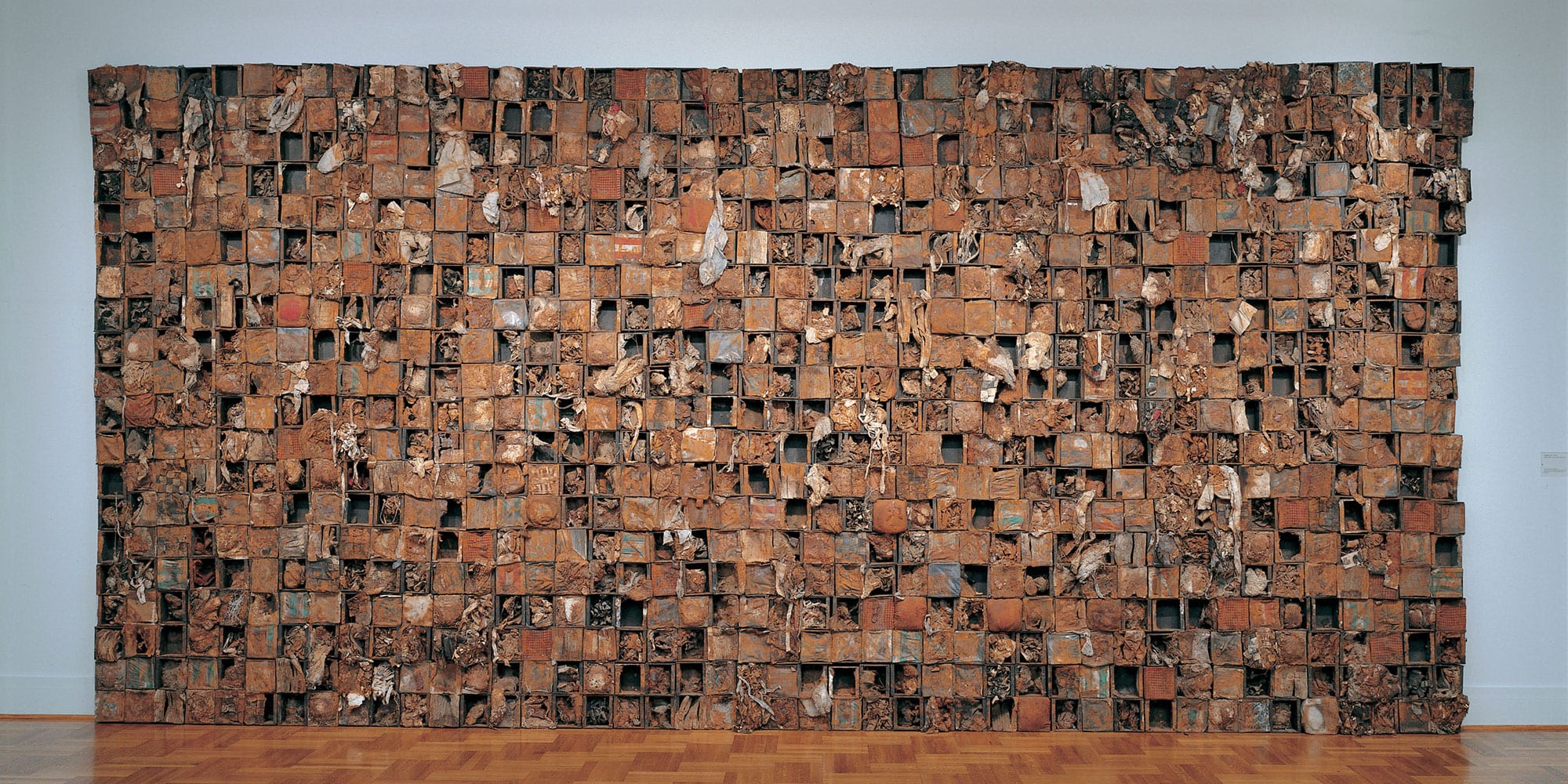
Leonardo Drew, Number 43, 1994. Fabric, plastic, rust, string, and wood. 138 x 288 x 12 inches.
Existed: Leonardo Drew
May 16—August 1, 2009
Blaffer Gallery, the Art Museum of the University of Houston, is proud to present the first American survey dedicated to the work of Leonardo Drew. The exhibition and this accompanying monograph chart Drew’s career over the past twenty years.
Born in Tallahassee, Florida, Drew and his family moved to Bridgeport, Connecticut when he was a child. A precocious adolescent artist adept in figurative drawing and painting, Drew exhibited locally throughout his teenage years. After attending Parsons School of Design in New York City for a year, he transferred to the city’s Cooper Union and completed his BFA in 1985. In 1986, Drew began experimenting with totemic images of cut paper mounted onto walls, which eventually led him to move away from painting and into the realm of sculpture. The conception of Number 8 (coinciding with the cut-outs, Drew had started to number his works) in 1988 marked a personal and artistic break-through. Made of blackened skeins of rope, dead birds, animal hides and carcasses, suspended from large wood supports, the work defines the emergence of Drew’s mature style. Much has been said about the exorcist quality of this piece as a catalyst for Drew coming to terms with his historical past as an African American male and the artist himself considers it the mother work from which all his subsequent work derived.
Throughout his career, Leonardo Drew has been continuously engaged with the cyclical nature of existence. Made to resemble the detritus of everyday life, his formally abstract but emotionally charged compositions have an aesthetic authority and metaphorical weight that is as unique as it is symbolic. Often interpreted as a comment on the position of African-Americans in contemporary American society, his work transcends any specific historic and ethnic reference, and has a unique aesthetic authority that is deeply embedded in the theory and practice of mid-twentieth-century abstraction. Ranging from the intense drama of his sculptures and installations of the 1980s, to the epic sweep of his massive wall-bound tableaux in the 1990s, to the ethereal language of his paper casts of the early 2000s, his works transcend time and place in favor of a celebration of things eternal. Add the poetic intimacy of his recent works on paper, and Drew’s practice can be described as a journey toward enlightenment, full of reprises and returns as well as new beginnings.
